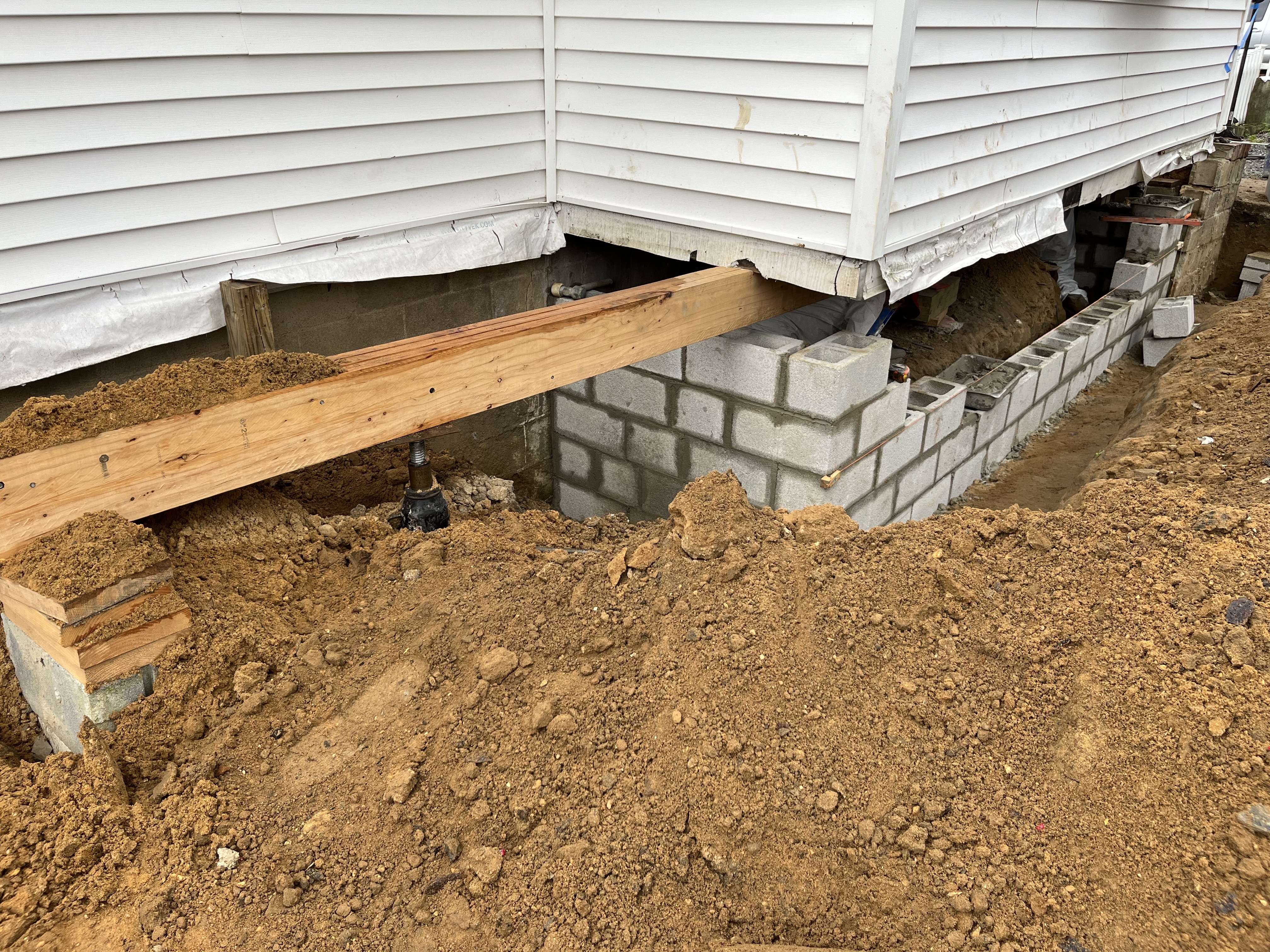
Nothing will stop you in your tracks quite like seeing a crack in your home’s foundation. Foundation cracks can be a sign of serious structural problems, which is scary. But they can also be minor and nothing to worry about.
At Total Home Performance, we’ve been keeping local homes safe and secure for over 16 years with our professional foundation repair services.
We wrote this guide to help you learn when a foundation wall crack is normal and when you should be concerned.
1. Vertical Cracks
What They Look Like: Vertical cracks run straight up and down or slightly diagonal.
What They Mean: These are the most common type of foundation crack and are usually the result of natural settling. They usually show up within the first few years of a house being built as it adjusts to its foundation.
Should You Worry? Minor vertical cracks less than 1/8-inch wide are typically just a cosmetic issue. But if they’re wider, growing, or letting in moisture, they should be evaluated.
2. Horizontal Cracks
What They Look Like: Horizontal lines running across the foundation wall.
What They Mean: These are among the most serious types of cracks and usually mean pressure is coming from the outside, such as soil or water pushing against your foundation walls. This is particularly common in homes with poor drainage or saturated soil.
Should You Worry? Yes. Horizontal cracks are a sign of structural issues that could lead to bowing or collapsing walls. Schedule an inspection with Total Home Performance immediately.
3. Stairstep Cracks
What They Look Like: Cracks that move in a zig-zag pattern, like a staircase.
What They Mean: Stairstep cracks are a common sign of differential settling, meaning part of your foundation is moving more than another. This can be due to shifting soil, poor drainage, or even nearby tree roots.
Should You Worry? Yes, especially if the crack is wider than 1/8 inch, getting bigger, or the wall around it is bulging.
4. Diagonal Cracks
What They Look Like: Cracks that slant at a 30–75 degree angle. They will often start at the corners of windows or doors.
What They Mean: Diagonal cracks typically indicate that your foundation is settling unevenly.
Should You Worry? Yes, especially if one end is wider than the other or you’re dealing with related issues, like sticking windows. This can be a sign of significant foundation movement and structural damage.
5. Hairline Cracks
What They Look Like: Thin, almost thread-like cracks that can be hard to notice.
What They Mean: Hairline cracks are common. They’re typically caused by concrete shrinkage during the curing process.
Should You Worry? Not usually. Hairline cracks are rarely a sign of a structural problem. If you don’t like the way they look, though, we’re happy to repair hairline cracks for you.
What to Do If You’re Worried About Foundation Wall Cracks
If you’re concerned about cracks in your basement or crawl space, it’s worth having them inspected. Some cracks are nothing to worry about, but others are serious. If you ignore them, you could end up with moisture and mold problems at best or serious structural damage at worst.
At Total Home Performance, we have over 16 years of experience inspecting and repairing foundation cracks in Maryland and Delaware. Give us a call today to schedule a foundation inspection. We help you find and fix foundation cracks quickly to protect your home.